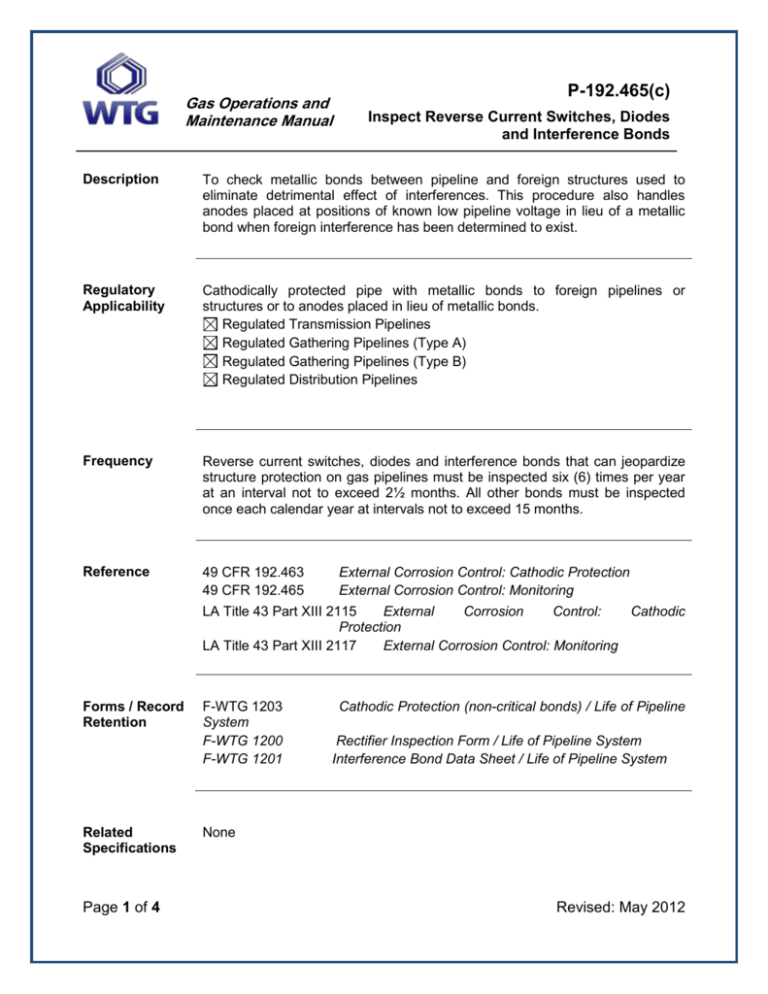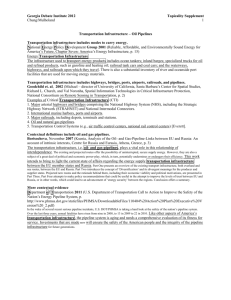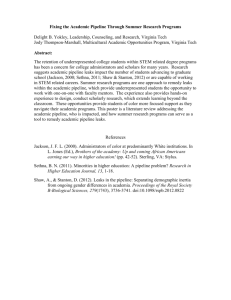P-192.465c-Reverse-Current-Switches-Diodes-Interference
advertisement

Gas Operations and Maintenance Manual P-192.465(c) Inspect Reverse Current Switches, Diodes and Interference Bonds Description To check metallic bonds between pipeline and foreign structures used to eliminate detrimental effect of interferences. This procedure also handles anodes placed at positions of known low pipeline voltage in lieu of a metallic bond when foreign interference has been determined to exist. Regulatory Applicability Cathodically protected pipe with metallic bonds to foreign pipelines or structures or to anodes placed in lieu of metallic bonds. Regulated Transmission Pipelines Regulated Gathering Pipelines (Type A) Regulated Gathering Pipelines (Type B) Regulated Distribution Pipelines Frequency Reverse current switches, diodes and interference bonds that can jeopardize structure protection on gas pipelines must be inspected six (6) times per year at an interval not to exceed 2½ months. All other bonds must be inspected once each calendar year at intervals not to exceed 15 months. Reference 49 CFR 192.463 49 CFR 192.465 External Corrosion Control: Cathodic Protection External Corrosion Control: Monitoring LA Title 43 Part XIII 2115 External Corrosion Control: Cathodic Protection LA Title 43 Part XIII 2117 External Corrosion Control: Monitoring Forms / Record Retention Related Specifications Page 1 of 4 F-WTG 1203 System F-WTG 1200 F-WTG 1201 Cathodic Protection (non-critical bonds) / Life of Pipeline Rectifier Inspection Form / Life of Pipeline System Interference Bond Data Sheet / Life of Pipeline System None Revised: May 2012 Gas Operations and Maintenance Manual OQ Covered Task 0061 0101 P-192.465(c) Inspect Reverse Current Switches, Diodes and Interference Bonds Inspect or Test Cathodic Protection Bonds Inspect Rectifier and Obtain Readings (In order to perform the tasks listed above; personnel must be qualified in accordance with West Texas Gas’s Operator Qualification program or directly supervised by a qualified individual.) Page 2 of 4 Revised: May 2012 Gas Operations and Maintenance Manual P-192.465(c) Inspect Reverse Current Switches, Diodes and Interference Bonds Procedure Steps NOTE: Refer to procedure P-192.483 for needed remedial actions. Remedial action must be taken promptly. I Test Reverse Current Switches and Diodes 1. 1) Record current flow using either a calibrated shunt or a clamp-on ammeter. 2. 2) In remote locations, high internal resistance ammeters may be used in series with the circuit provided the added resistance does not affect the required current and it does not produce an error in the reading. In this case, the pipe-to-soil potentials are not required unless the current changes by 20% or more from any reading since the last CPSS. Test Bonds 1. Use hi-impedance voltmeter, test leads, and copper-copper sulfate half-cell. 2. Measure the pipe-to-soil potential at each bond of the company pipeline to a foreign structure. The bond may be a metallic wire connected to the foreign structure, or it may be sacrificial anodes that have been specifically placed to mitigate adverse effects of foreign interference current leaving the company pipeline. a) When taking a pipe-to-soil potential reading, place reference half-cell on ground directly over the location where bond wire connects to the company pipeline. NOTE: This may not be the same location as where the test station containing the shunt and the lead wire from the foreign structure is located b) Connect the reference cell to the voltmeter negative (common) terminal, and the lead wire from the company pipeline (at test station) to the voltmeter positive terminal. If necessary, use a close-interval wire reel to connect the voltmeter positive to the test station while keeping the reference cell properly positioned. c) Record results on Form F-WTG-1201. d) If pipe-to-soil voltage is more positive than –0.85 volts DC, seek assistance immediately from appropriate personnel. 3. Measure and record the magnitude of current flow (millivolts across shunt,) and the direction of current flow. Page 3 of 4 Revised: May 2012 Gas Operations and Maintenance Manual P-192.465(c) Inspect Reverse Current Switches, Diodes and Interference Bonds 4. Determine direction of current flow using the following convention: a) Attach the positive lead of the voltmeter to the side of the shunt connected to the company pipeline. b) Attach the negative (common) lead to the side of the shunt going to the foreign structure. Current flow must be “positive” if the company line was the “affected” pipeline. Record results on Form WTG 1201 c) If no current flow exists check all circuit connections: cable connections, shunt connections, and any resistors and/or diode connections. d) If after field-inspection no current flow can be detected, or if current flow is negative, notify management and seek assistance from appropriate personnel for additional investigation e) If a diode is used, temporarily jumper it out and recheck shunt voltage and direction of current flow. Record both in the appropriate section of Form WTG 1200. Remove the temporary jumper and log the removal on same form. Page 4 of 4 Revised: May 2012







